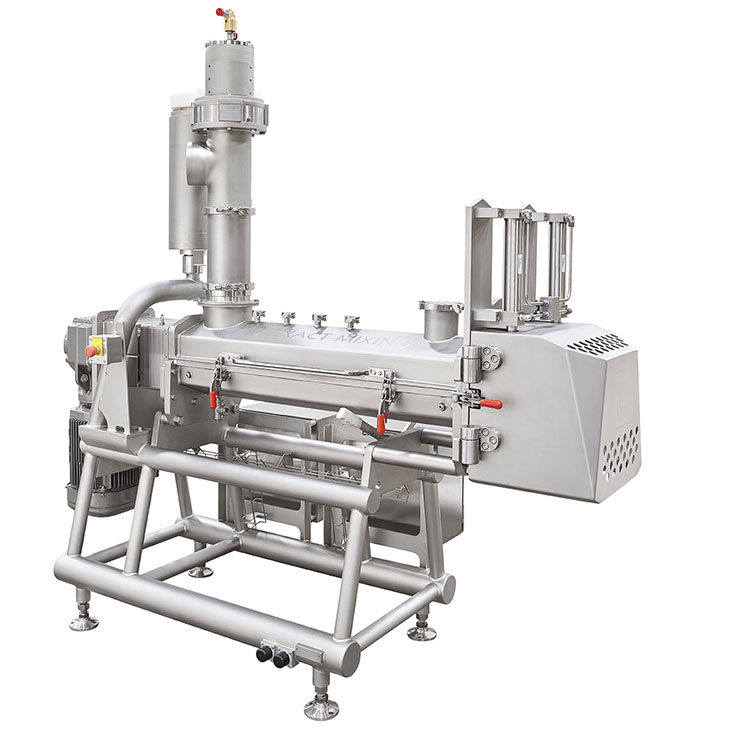
To consistently produce high-quality pizza, especially at high speeds in industrial environments, all types of equipment on the production line must contribute at the right time, with the exact process they are programmed to perform.
The best way to evaluate and select the equipment that best fits your specific pizza production process is to see it working live. This is why Reading Bakery Systems (RBS) showcases an Exact Continuous Mixing System at the AMF Tromp Innovation Center in the Netherlands. It is used demonstrate continuous mixing for pizza, and a wide range of other bakery products. The two sister companies have designed the dough handling equipment between the Continuous Mixer and the AMF Tromp pizza forming equipment, to offer a smooth transition of dough without operator intervention.
Jim Warren, Vice President of Exact Mixing at RBS, shares with us an overview of this system: “The MX Mixer is our most versatile mixer and is designed for doughs above 40% hydration. This would include all bakery doughs except the stiffer doughs such as crackers and pretzels. It is also ideal for icings and high-fat mixtures. We also included an HDX mixer, which combines the MX mixer and high-speed developer to make all types of bread and bun doughs.” All types of two-stage cookie doughs can also be mixed, changing the mixer’s shafts.
Typically, pizza doughs are characterized by a mid-hydration level and mid-development level, which makes them suitable for the MX Continuous Mixer. Different types of products require different shaft designs for mixing the dough in the MX Mixer. Anything from pizza balls, frozen/parbaked crusts and finished pizza dough can be made with the same mixer design, but with different types of shafts. Exact Mixing is also using special systems, specifically designed for pizza production, including:
+ Auto trim return systems for rotary cut crusts
+ Auto dough temp control out of the mixer
+ Dough handling systems to keep forming hoppers at a constant level
+ Auto dough chunking systems integrated into the mixer

MX continuous mixer with Hydrobond Technology
Putting Hydrobond Technology to use
The purpose of Hydrobond Technology is to instantly hydrate dry ingredients with liquid ingredients. Typically, the first 30% of the mixing time and energy in a batch mixer is strictly used to hydrate the dries with the liquids. In a continuous mixer, that is reduced to 10%, but in the case of rapid hydration, that number is reduced to almost zero. “There are numerous advantages to this system,” highlights Warren. The Exact Mixing Hydrobond Technology brings liquids and a dry ingredient stream (typically flour) together quickly and evenly, with little temperature gain. It can be used with a continuous mixer to make the mixing process more efficient or with a pre-hydration system to mix flour, minor ingredients and water directly into a brew holding tank. This system speeds up the continuous process allowing for the use of a shorter mixer, which means a smaller footprint, lower equipment costs, and lower energy costs, he explains. Hydrobond Technology can be added to existing Continuous mixers, as well as some batch mixers.
What aspects should determine the choice between mixing technologies when making pizza? “Economics suggest that continuous mixing makes more sense financially, as the dough throughput increases, changeovers decrease, and the value of the dough increases. Other factors include the labor force available, available plant space, and others,” Warren summarizes. To optimize continuous mixing, particularly when making pizza, the specialist recommends looking into the complexity of the recipe, the desired throughput, the number of daily changeovers required, and the level of automation needed. “Continuous mixing systems are designed to constantly monitor potential variables and to auto-correct when disruption occurs. This advanced technology leaves little chance for error,” he concludes.


